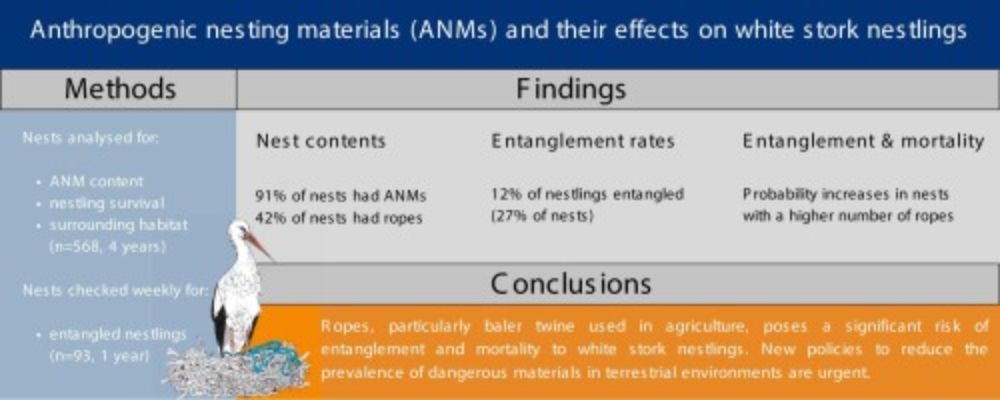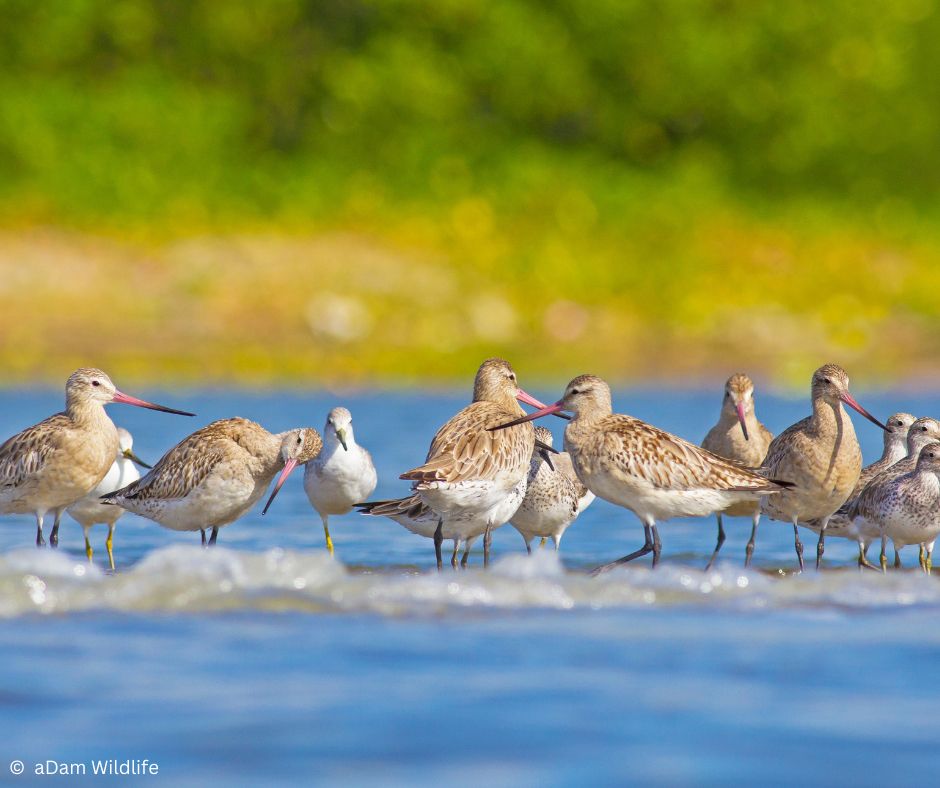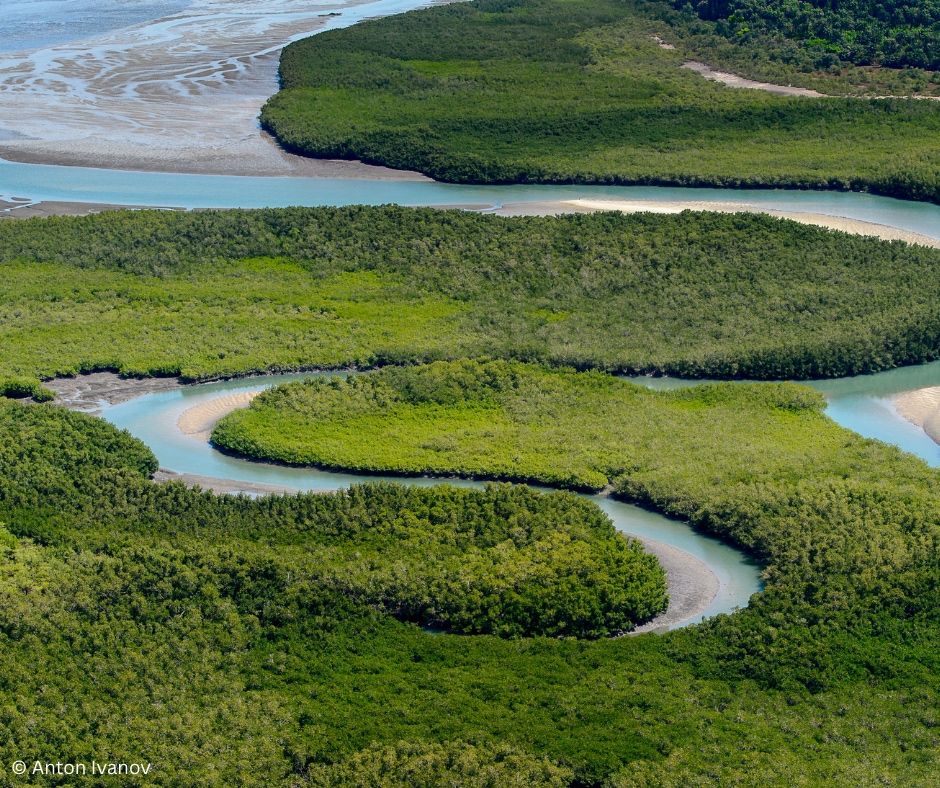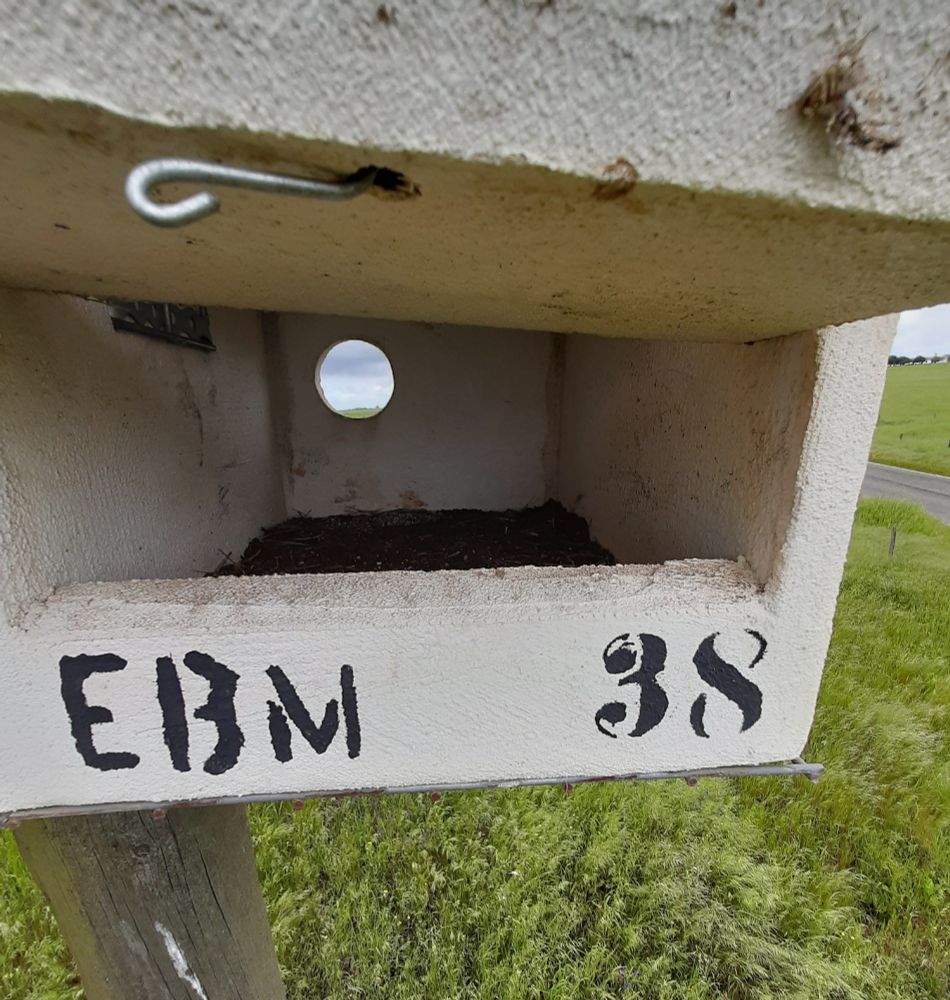
Teresa Catry
@teresacatry.bsky.social
Assistant Professor, University of Lisbon
#Ornithology #Migration #Conservation #TrophicNetworks #MovementEcology
#Ornithology #Migration #Conservation #TrophicNetworks #MovementEcology
Reposted by Teresa Catry

October 22, 2025 at 8:23 AM
Extremelly happy that our project BirdRice was approved for funding! We will keep studying the relationships between #waterbirds and #ricefields while trying to solve human-wildlife conflicts.
#ornithology #tracking #connectivity #agriculture #conservation
@cienciasulisboa.bsky.social
#ornithology #tracking #connectivity #agriculture #conservation
@cienciasulisboa.bsky.social

October 21, 2025 at 11:03 AM
Extremelly happy that our project BirdRice was approved for funding! We will keep studying the relationships between #waterbirds and #ricefields while trying to solve human-wildlife conflicts.
#ornithology #tracking #connectivity #agriculture #conservation
@cienciasulisboa.bsky.social
#ornithology #tracking #connectivity #agriculture #conservation
@cienciasulisboa.bsky.social
Reposted by Teresa Catry
Bird migration is changing. What does this reveal about our planet? – visualised

Bird migration is changing. What does this reveal about our planet? – visualised
Bird migrations rank as one of nature’s greatest spectacles. Thanks to GPS tracking, scientists are uncovering extraordinary insights into ancient and mysterious journeys – and new threats that are reshaping them.
www.theguardian.com
October 16, 2025 at 8:32 AM
Bird migration is changing. What does this reveal about our planet? – visualised
Reposted by Teresa Catry
En algun lugar del frente ucraniano un drone militar graba con camara termica un zorro cazando. Atentos a la definicion de los micrmamiferos...Sera deformación profesional pero vaya abanico de posibilidades
October 9, 2025 at 10:26 AM
En algun lugar del frente ucraniano un drone militar graba con camara termica un zorro cazando. Atentos a la definicion de los micrmamiferos...Sera deformación profesional pero vaya abanico de posibilidades
Reposted by Teresa Catry
Sexual Dimorphism in the Glossy Ibis (Plegadis falcinellus): Tools for Field-Based Sex Determination | doi.org/10.1675/063.... | Waterbirds | #ornithology 🪶

October 3, 2025 at 4:27 PM
Sexual Dimorphism in the Glossy Ibis (Plegadis falcinellus): Tools for Field-Based Sex Determination | doi.org/10.1675/063.... | Waterbirds | #ornithology 🪶
Glossy ibis males are significantly larger than females across all biometrics evaluated, despite some overlap.
Check it all in our new paper @waterbirdsociety.bsky.social
doi.org/10.1675/063....
@teresacatry.bsky.social @marescience.bsky.social @cienciasulisboa.bsky.social
Check it all in our new paper @waterbirdsociety.bsky.social
doi.org/10.1675/063....
@teresacatry.bsky.social @marescience.bsky.social @cienciasulisboa.bsky.social

September 24, 2025 at 12:21 PM
Reposted by Teresa Catry
How do your #linguistic, #economic & #gender backgrounds impact your #scientific productivity? @tatsuya-amano.bsky.social & co reveal that being a woman, a non-native English speaker, and from a low-income country is associated with a 70% reduction in productivity @plosbiology.org 🧪 plos.io/4n3RLRQ

September 19, 2025 at 8:20 AM
How do your #linguistic, #economic & #gender backgrounds impact your #scientific productivity? @tatsuya-amano.bsky.social & co reveal that being a woman, a non-native English speaker, and from a low-income country is associated with a 70% reduction in productivity @plosbiology.org 🧪 plos.io/4n3RLRQ
During the last days, 2 of our tagged Glossy ibis left Iberia to Morocco. "Giganta", the 2nd-year bird on the left, returned to Doñana 3 days after departing. "Fugas", the juvenile on the right, seems more confident to stay. No tagged birds in the UK for now!
#ornithology #tracking
#ornithology #tracking

September 9, 2025 at 8:16 AM
During the last days, 2 of our tagged Glossy ibis left Iberia to Morocco. "Giganta", the 2nd-year bird on the left, returned to Doñana 3 days after departing. "Fugas", the juvenile on the right, seems more confident to stay. No tagged birds in the UK for now!
#ornithology #tracking
#ornithology #tracking
Reposted by Teresa Catry
PhD position available on climate change, cyanobacterial blooms, and human health @ebdonana.bsky.social We are looking for interested candidates, details attached. Please share.. @sibecol.bsky.social @freshwaterscience.bsky.social @aillimnologia.bsky.social @aslo.org @sil-limnology.bsky.social

August 28, 2025 at 1:01 PM
PhD position available on climate change, cyanobacterial blooms, and human health @ebdonana.bsky.social We are looking for interested candidates, details attached. Please share.. @sibecol.bsky.social @freshwaterscience.bsky.social @aillimnologia.bsky.social @aslo.org @sil-limnology.bsky.social
The new fieldwork season in the rice fields of the Tagus estuary has just started! Glossy ibis are already gathering in large flocks during the night.
#ornithology #tracking #ricefields
#ornithology #tracking #ricefields

August 7, 2025 at 4:01 PM
The new fieldwork season in the rice fields of the Tagus estuary has just started! Glossy ibis are already gathering in large flocks during the night.
#ornithology #tracking #ricefields
#ornithology #tracking #ricefields
Reposted by Teresa Catry
Materiais de origem humana usados em ninhos de cegonhas estão a matar as suas crias: Inês Catry, investigadora de CIÊNCIAS, coordenou um estudo onde foram monitorizadas 32 colónias e 568 ninhos de cegonha-branca no Alentejo e Algarve entre 2018 e 2023.
🔗 tinyurl.com/yu42p2ue
🔗 tinyurl.com/yu42p2ue

Cordas sintéticas usadas pelas cegonhas nos ninhos estão a matar as crias
Entre 2018 e 2023, as investigadoras captaram imagens de 568 ninhos no Alentejo e Algarve e no último desses anos analisaram semanalmente 93 deles, verificando o estado das crias.
tinyurl.com
August 7, 2025 at 10:02 AM
Materiais de origem humana usados em ninhos de cegonhas estão a matar as suas crias: Inês Catry, investigadora de CIÊNCIAS, coordenou um estudo onde foram monitorizadas 32 colónias e 568 ninhos de cegonha-branca no Alentejo e Algarve entre 2018 e 2023.
🔗 tinyurl.com/yu42p2ue
🔗 tinyurl.com/yu42p2ue
We didn’t vote for you to be complicit in genocide. We voted for you to protect human rights. @kajakallas.bsky.social @vonderleyen.ec.europa.eu — you still have time to make the right choice. #SuspendTheDeal
July 21, 2025 at 10:50 AM
We didn’t vote for you to be complicit in genocide. We voted for you to protect human rights. @kajakallas.bsky.social @vonderleyen.ec.europa.eu — you still have time to make the right choice. #SuspendTheDeal
Diários da República www.publico.pt/2025/07/17/n...

O ódio vai ficar com tudo (e com as nossas reformas)
Uma newsletter de Ana Sá Lopes em que a política vai a despacho.
www.publico.pt
July 18, 2025 at 3:06 PM
Diários da República www.publico.pt/2025/07/17/n...
Reposted by Teresa Catry
In our new paper, we show that using ropes as nesting material (particularly baler twine) cause entanglement and mortality #WhiteStork nestlings. It's time to rethink our agricultural practices and materials!
@inescatry.bsky.social @aldinafranco.bsky.social
#ornithology #ecology #conservation 🧪
@inescatry.bsky.social @aldinafranco.bsky.social
#ornithology #ecology #conservation 🧪
In our new paper led by Ursula Heize, we show that >90% of #WhiteStork nests have anthropogenic materials (plastics, paper, etc). Ropes are particularly dangerous: ~12% of the chicks became entangled on ropes, particularly on baler twine!
Check out the paper: www.sciencedirect.com/science/arti...
Check out the paper: www.sciencedirect.com/science/arti...

A death trap in the nest: anthropogenic nest materials cause high mortality in a terrestrial bird
The impact of anthropogenic debris on wildlife, particularly in marine environments, has garnered significant attention in recent years due to the sev…
www.sciencedirect.com
July 15, 2025 at 2:41 PM
In our new paper, we show that using ropes as nesting material (particularly baler twine) cause entanglement and mortality #WhiteStork nestlings. It's time to rethink our agricultural practices and materials!
@inescatry.bsky.social @aldinafranco.bsky.social
#ornithology #ecology #conservation 🧪
@inescatry.bsky.social @aldinafranco.bsky.social
#ornithology #ecology #conservation 🧪
Reposted by Teresa Catry
We found that plastic materials left in the environment are carried by white storks to their nests and then cause chick mortality due to entanglements www.theguardian.com/environment/... link to paper: www.sciencedirect.com/science/arti... @ueaenv.bsky.social @ueaceec.bsky.social

Killer in the nest: how young storks are being strangled by plastic
Researchers in Europe found everyday plastics, especially farmers’ baler twine, being used by the birds as a building material and entangling their young. It is a problem that affects other species to...
www.theguardian.com
July 14, 2025 at 9:57 AM
We found that plastic materials left in the environment are carried by white storks to their nests and then cause chick mortality due to entanglements www.theguardian.com/environment/... link to paper: www.sciencedirect.com/science/arti... @ueaenv.bsky.social @ueaceec.bsky.social
Wonderful news for the people and the birds of Guinea-Bissau and the Bijagós Archipelago - a really unique place in the world!
Still, a challenging future ahead!
#ornithology #migration #conservation
Still, a challenging future ahead!
#ornithology #migration #conservation
Huge win for migratory birds!✨
Today, we celebrate the declaration of the Bijagós Archipelago in Guinea-Bissau as a World Heritage Site by UNESCO. 🏛️
This rare marine and coastal ecosystem is a critical site for more than 870,000 migratory birds.🐦
Discover more here 🔗 trt.global/afrika-engli...
Today, we celebrate the declaration of the Bijagós Archipelago in Guinea-Bissau as a World Heritage Site by UNESCO. 🏛️
This rare marine and coastal ecosystem is a critical site for more than 870,000 migratory birds.🐦
Discover more here 🔗 trt.global/afrika-engli...



July 14, 2025 at 3:46 PM
Wonderful news for the people and the birds of Guinea-Bissau and the Bijagós Archipelago - a really unique place in the world!
Still, a challenging future ahead!
#ornithology #migration #conservation
Still, a challenging future ahead!
#ornithology #migration #conservation
Reposted by Teresa Catry
An excellent PhD thesis. Birds don't understand borders, and the community of storks, ibis, gulls etc in the ricefields of the Tagus/Tajo delta is similar to that of the ricefields in Doñana, with similar conservation issues and agricultural conflicts
Yesterday, João Paulino defended his PhD thesis "Rice fields as alternative habitats for waterbirds: ecological equivalence and mutual cost-benefits for birds and rice growers". A memorable day! Congratulations João!
@cienciasulisboa.bsky.social
@jpgranadeiro.bsky.social
@drandygreen.bsky.social
@cienciasulisboa.bsky.social
@jpgranadeiro.bsky.social
@drandygreen.bsky.social

July 14, 2025 at 12:12 PM
An excellent PhD thesis. Birds don't understand borders, and the community of storks, ibis, gulls etc in the ricefields of the Tagus/Tajo delta is similar to that of the ricefields in Doñana, with similar conservation issues and agricultural conflicts
Our research on waterbird ecology in the rice fields of the Tagus river basin made the cover of Hydrobiologia.
You can read the paper here: link.springer.com/article/10.1...
#ornithology #ricefields
@cienciasulisboa.bsky.social @jpgranadeiro.bsky.social
You can read the paper here: link.springer.com/article/10.1...
#ornithology #ricefields
@cienciasulisboa.bsky.social @jpgranadeiro.bsky.social

July 10, 2025 at 10:32 AM
Our research on waterbird ecology in the rice fields of the Tagus river basin made the cover of Hydrobiologia.
You can read the paper here: link.springer.com/article/10.1...
#ornithology #ricefields
@cienciasulisboa.bsky.social @jpgranadeiro.bsky.social
You can read the paper here: link.springer.com/article/10.1...
#ornithology #ricefields
@cienciasulisboa.bsky.social @jpgranadeiro.bsky.social
Yesterday, João Paulino defended his PhD thesis "Rice fields as alternative habitats for waterbirds: ecological equivalence and mutual cost-benefits for birds and rice growers". A memorable day! Congratulations João!
@cienciasulisboa.bsky.social
@jpgranadeiro.bsky.social
@drandygreen.bsky.social
@cienciasulisboa.bsky.social
@jpgranadeiro.bsky.social
@drandygreen.bsky.social

July 1, 2025 at 4:27 PM
Yesterday, João Paulino defended his PhD thesis "Rice fields as alternative habitats for waterbirds: ecological equivalence and mutual cost-benefits for birds and rice growers". A memorable day! Congratulations João!
@cienciasulisboa.bsky.social
@jpgranadeiro.bsky.social
@drandygreen.bsky.social
@cienciasulisboa.bsky.social
@jpgranadeiro.bsky.social
@drandygreen.bsky.social
Reposted by Teresa Catry
The 2025 US State of the birds report shows bird population declines continue in all major habitats, e.g. grassland birds have declined by 43% & aridland birds by 41% since 1970.
www.rarebirdalert.co.uk/v2/Content/S... www.stateofthebirds.org/2025/
www.rarebirdalert.co.uk/v2/Content/S... www.stateofthebirds.org/2025/

Still Falling: The Fate of America’s Birds in 2025
The 2025 State of the Birds report confirms that losses of America's birds are continuing and, while some species are stable or recovering, many more are in sharp decline.
www.rarebirdalert.co.uk
April 17, 2025 at 11:33 AM
The 2025 US State of the birds report shows bird population declines continue in all major habitats, e.g. grassland birds have declined by 43% & aridland birds by 41% since 1970.
www.rarebirdalert.co.uk/v2/Content/S... www.stateofthebirds.org/2025/
www.rarebirdalert.co.uk/v2/Content/S... www.stateofthebirds.org/2025/
Reposted by Teresa Catry
Spring has arrived, and so have the first rollers!
Our team is working hard to provide them with the best nesting sites. Follow our journey!
#ornithology #conservation
Our team is working hard to provide them with the best nesting sites. Follow our journey!
#ornithology #conservation



April 15, 2025 at 3:42 PM
Spring has arrived, and so have the first rollers!
Our team is working hard to provide them with the best nesting sites. Follow our journey!
#ornithology #conservation
Our team is working hard to provide them with the best nesting sites. Follow our journey!
#ornithology #conservation
Reposted by Teresa Catry
🚨Publication in @globalchangebio.bsky.social by Lameris et al.
→ Early snowmelt = earlier egg-laying, but only 2 waterfowl arrived earlier.
→ Over time, most arrived earlier—regardless of snowmelt or laying.
→ Why? Faster migration: shorter stopovers = earlier arrival.
🔗 doi.org/10.1111/gcb....
→ Early snowmelt = earlier egg-laying, but only 2 waterfowl arrived earlier.
→ Over time, most arrived earlier—regardless of snowmelt or laying.
→ Why? Faster migration: shorter stopovers = earlier arrival.
🔗 doi.org/10.1111/gcb....

Migratory Birds Advance Spring Arrival and Egg‐Laying in the Arctic, Mostly by Travelling Faster
A warming climate is affecting the phenology of life on earth, including when birds migrate and start breeding. We show that earlier arrival is a general pattern also for birds travelling to the Arct...
doi.org
April 9, 2025 at 11:06 AM
🚨Publication in @globalchangebio.bsky.social by Lameris et al.
→ Early snowmelt = earlier egg-laying, but only 2 waterfowl arrived earlier.
→ Over time, most arrived earlier—regardless of snowmelt or laying.
→ Why? Faster migration: shorter stopovers = earlier arrival.
🔗 doi.org/10.1111/gcb....
→ Early snowmelt = earlier egg-laying, but only 2 waterfowl arrived earlier.
→ Over time, most arrived earlier—regardless of snowmelt or laying.
→ Why? Faster migration: shorter stopovers = earlier arrival.
🔗 doi.org/10.1111/gcb....
Reposted by Teresa Catry
So happy to share our paper on how #WhiteStorks are changing their migratory behaviour. Check it here:
👉 besjournals.onlinelibrary.wiley.com/doi/full/10....
👉 besjournals.onlinelibrary.wiley.com/doi/full/10....

Mechanisms underlying the loss of migratory behaviour in a long‐lived bird
White stork populations in Iberia are undergoing a profound change in their migratory patterns, becoming mostly resident. By combining census data, GPS-tracking and genomic analyses, Andrade et al. l...
besjournals.onlinelibrary.wiley.com
April 4, 2025 at 11:36 AM
So happy to share our paper on how #WhiteStorks are changing their migratory behaviour. Check it here:
👉 besjournals.onlinelibrary.wiley.com/doi/full/10....
👉 besjournals.onlinelibrary.wiley.com/doi/full/10....
📣PhD opportunity!
We are looking for a candidate to develop a project on the spatial ecology of #waterbirds using rice fields. Check for the complete details below, and get in touch until the 21st of March!
drive.google.com/file/d/1R8MI...
#ornithology #movement #tracking #connectivity
We are looking for a candidate to develop a project on the spatial ecology of #waterbirds using rice fields. Check for the complete details below, and get in touch until the 21st of March!
drive.google.com/file/d/1R8MI...
#ornithology #movement #tracking #connectivity

March 19, 2025 at 8:47 AM
The European Roller is Critically Endangered in Portugal. We are working hard for this project to make some difference.
#ornithology #conservation
#ornithology #conservation
The European Roller (Coracias garrulus) keeps declining in Portugal. Our 2024 census shows over 95% of the population constricted to the Castro Verde SPA.
We must roll up our sleeves and help them thrive!
Find out more about this census and the project: sites.google.com/view/roller-...
We must roll up our sleeves and help them thrive!
Find out more about this census and the project: sites.google.com/view/roller-...

March 19, 2025 at 8:46 AM
The European Roller is Critically Endangered in Portugal. We are working hard for this project to make some difference.
#ornithology #conservation
#ornithology #conservation

